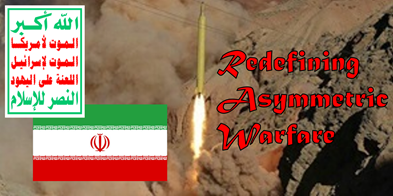[Editor’s Note: Army Mad Scientist and the TRADOC G-2 have benefitted from an enduring and successful record of collaboration with students from The College of William and Mary. Today’s post by summer e-intern Ethan Sah is just the latest in a long line of insightful submissions the Mad Scientist Laboratory has had the privilege of publishing — helping to broaden our understanding of the Operational Environment. While interning with us, Mr. Sah researched Iran’s Axis of Resistance and its constituent Violent Extremist Organizations. Today’s piece examines Yemen’s Houthi Movement, its relationship with Iran that is enabling it to “punch above its weight,” and how this relationship is redefining asymmetric warfare, proxy warfare, and gray-zone operations — Enjoy!]
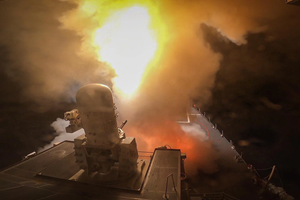
Operation Prosperity Guardian, the ongoing international effort to defend against Houthi attacks on Red Sea shipping, was recently declared by the Associated Press to be the U.S. Navy’s “most intense conflict since World War II.”1 However subjective this measure of “intensity” may be, Iranian backing and weapons supplies mean the Houthis pose a sharper and more complicated threat than they would alone. The Houthis are only one VEO — one spoke in Iran’s “axis of resistance” — but their transformation holds implications for the future of asymmetric warfare, proxy warfare, and gray-zone operations alike.
The fact that the Navy’s conflict with the Houthis has grown more intense than operations during the Korean or Vietnam Wars suggests a new era of asymmetric warfare in which state-supported VEOs are empowered to deploy systems that would typically lie far out of reach for such groups. With a reliable supply of missiles, one-way attack drones, and other munitions from Iran, the Houthis are able not only to launch massive attacks but to sustain these attacks over long periods of time.

This evolution in the practice of asymmetric warfare comes even as VEOs retain many of their defensively oriented strengths. Classically, the advantages of VEOs lie in their survivability—their ability to blend in with local populations, maintain a low profile, and avoid decisive engagements. A steady stream of weapons from Iran has enabled the Houthis to pair these benefits with formidable offensive capabilities. Although the Houthis’ tactics may still be described as hit-and-run, the hits are coming harder and more often. In the words of Bryan Clark, a senior fellow at the Hudson Institute and former Navy submariner interviewed by the AP, “We’re… on the verge of the Houthis being able to mount the kinds of attacks that the U.S. can’t stop every time, and then we will start to see substantial damage. … If you let it fester, the Houthis are going to get to be a much more capable, competent, experienced force.”2
All the while, deterrence remains elusive against a foe whose mantra of “death to America” leaves little room for compromise or negotiation. As a nonstate actor, the Houthi movement is also freer to operate without regard for international norms. This strengthens the group’s symbiotic relationship with Iran, whose longer-term outlook and status as a member of the international community, however ostracized, compel it to seek a degree of separation from the most egregious violations of these norms.3
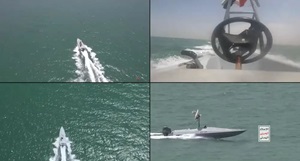
Despite near-constant engagement with the Houthis, the U.S. approach remains measured in an effort to avoid provoking even greater violence.4 This dynamic suggests an asymmetry of escalation in which well-armed VEOs can engage intensely with U.S. forces while remaining below the threshold of war, provoking proportionately limited retaliation. The use of pulsed saturation tactics, including relatively cheap unmanned systems, simplifies the task of scaling operations to meet a desired level of intensity. High volumes of complex fires may be launched across multiple domains, creating response dilemmas for defenders triaging the incoming attacks. Heralding this shift, the Houthis have recently deployed unmanned surface vessels (USVs)5 and low-space-capable ballistic missiles6 in addition to their UAVs and rockets. The threat of even one munition reaching its target—whether a single missile launched undefended or one of many systems that manages to slip past substantial defenses—creates uncertainty and requires a constant ability to defend.
According to the Foreign Military Studies Office’s Lucas Winter, “Three de facto strategic coalitions dominate the contemporary Middle East geopolitical landscape: the Iranian-led ‘Axis of Resistance,’ the Turkish-led ‘Political Islam Coalition,’ and the U.S.-led ‘Arab Normalization’ Coalition, anchored by Egypt and Saudi Arabia.”7 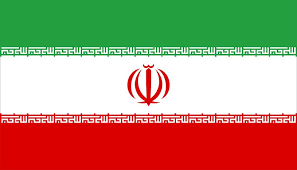 As Iran seeks to compete with the U.S. and its partners in the Middle East, acting through proxies serves to minimize its own exposure and avoid the appearance of an all-out confrontation. Here again the logic of deterrence begins to break down. Iranian leadership have judged their proxy-focused doctrine so successful that the Islamic Revolutionary Guard Corps’ Quds Force irregular warfare unit has only accelerated its cultivation of the “Axis of Resistance” following the assassination of Quds Force commander Qassem Soleimani. Having friends in strategic places increases Iran’s flexibility to pressure Israel, the U.S., and Saudi Arabia all while diverting pressure away from itself.8 As long as Iran can avoid bearing the brunt of international retaliation for the results of its activities, it has little incentive to stop supplying its allies and can even deny that it is doing so. Seeking to set the terms of engagement, Iran can mobilize its proxies to create multiple immediate threats in the Middle East region and force opponents into a reactive posture.
As Iran seeks to compete with the U.S. and its partners in the Middle East, acting through proxies serves to minimize its own exposure and avoid the appearance of an all-out confrontation. Here again the logic of deterrence begins to break down. Iranian leadership have judged their proxy-focused doctrine so successful that the Islamic Revolutionary Guard Corps’ Quds Force irregular warfare unit has only accelerated its cultivation of the “Axis of Resistance” following the assassination of Quds Force commander Qassem Soleimani. Having friends in strategic places increases Iran’s flexibility to pressure Israel, the U.S., and Saudi Arabia all while diverting pressure away from itself.8 As long as Iran can avoid bearing the brunt of international retaliation for the results of its activities, it has little incentive to stop supplying its allies and can even deny that it is doing so. Seeking to set the terms of engagement, Iran can mobilize its proxies to create multiple immediate threats in the Middle East region and force opponents into a reactive posture.
Looking to the future of asymmetric warfare, VEOs are likely to pair their traditional motivations to fight with enhanced capabilities and an increased tolerance for confrontation, seeking out higher-intensity conflict. Ideologically, the Houthis are motivated by a familiar fusion of anti-American and anti-Israeli convictions. It is largely their access to sophisticated Iranian weapons that places them in a higher echelon than many other regional VEOs. And while this combination makes the group uniquely formidable, it also presents new weaknesses. Any disruptions to the Houthis’ Iranian supply chains would threaten their ability to sustain attacks at their current level. Attempts at this have proven difficult in practice, but supply chain disruption remains a promising long-term area of focus as more state-affiliated VEOs emerge.
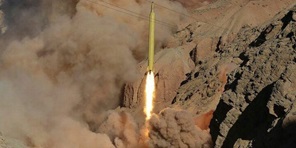
More broadly, state-sponsored VEOs are set to play an expanding role in the Operational Environment as opponents that may act independently, as part of a whole, or both. As VEOs work more closely with their state backers to receive weapons and training, they will begin to punch above their weight more consistently, redefining what it means to wage an asymmetric war.9 Defending effectively in these conflicts remains a challenge for Western Anti-Access/Area Denial (A2/AD) capabilities. While the Joint Force must interdict all complex fires to ensure freedom of navigation through this vital trade route, the Houthis are only one lucky hit away from sinking a merchant ship and closing sea lanes or scoring catastrophic damage against a naval vessel.
If you enjoyed this post, check out the following insightful content featuring the work of other students from The College of William and Mary:
Through the Eyes of Gen Z: National Security Challenges and Solutions for the 21st Century
GEN Z and the OE: 2020 Final Findings
On Thin Ice… and The Need for Speed (and Maneuverability), by Seth Gnesin
The Exploitation of our Biases through Improved Technology, by Raechel Melling
Water: A Fluid Challenge for the Future, Recruiting the All-Volunteer Force of the Future, The Inexorable Role of Demographics, and Using Wargames to Reconceptualize Military Power, by proclaimed Mad Scientist Caroline Duckworth
Star Wars 2050, The Final Frontier: Directed Energy Applications in Outer Space, Damnatio Memoriae through AI, and The Evolution of Nation-States and Their Role in the Future, by proclaimed Mad Scientist Marie Murphy
Climate Change Laid Bare: Why We Need To Act Now, by proclaimed Mad Scientist Sage Miller
About the Author: Ethan Sah e-interned with Army Mad Scientist during the summer of 2024. Studying International Relations at The College of William and Mary, Mr. Sah also served as Research Officer for the John Quincy Adams Society (JQAS), synthesizing information from a range of sources and perspectives in preparing presentations on prominent geopolitical issues. Additionally, Mr. Sah served as Peer Reviewer for the James Blair Historical Review undergraduate historical journal — participating in the journal’s scholarly publishing seminar and obtaining insights regarding the publishing process and editing best practices.
Disclaimer: The views expressed in this blog post do not necessarily reflect those of the U.S. Department of Defense, Department of the Army, Army Futures Command (AFC), or Training and Doctrine Command (TRADOC).
1 Gambrell, John. (2024). US Navy Faces its Most Intense Combat since World War II against Yemen’s Iran-backed Houthi Rebels. The Associated Press. https://apnews.com/article/us-navy-yemen-houthis-israel-war-7a9997f9d84ac669fae69ecf819913fb
2 Gambrell, John. US Navy Faces
3 Warrell, Helen. (2020). Future of warfare: high-tech militias fight smoldering proxy wars. Aerospace & Defense. Financial Times. https://www.ft.com/content/ab49c39c-1c0c-11ea-81f0-0c253907d3e0
4 Cooper, Helene., Schmitt, Eric. (2024). How a Ragtag Militia in Yemen Became a Nimble U.S. Foe. New York Times. https://www.nytimes.com/2024/01/24/us/politics/houthis-red-sea-airstrikes.html
5 Saul, Jonathan., Maltezou, Renee. (2024). Houthi explosive drone boat attacks escalate Red Sea danger. Reuters. https://www.reuters.com/world/middle-east/houthi-explosive-drone-boat-attacks-escalate-red-sea-danger-2024-07-03/
6 Greenberg, Tzally. (2023). C4ISRNET. https://www.c4isrnet.com/battlefield-tech/space/2023/11/10/israel-announces-first-arrow-3-operational-intercept/
7 Winter, Lucas. (2024). “Gaza War’s Impact On The Middle East Strategic Landscape.” https://oe.tradoc.army.mil/2024/06/27/gaza-wars-impact-on-the-middle-east-strategic-landscape/
8 Ali, Javed. (2024). Commander of Iran’s elite Quds Force is expanding predecessor’s vision of chaos in the Middle East. The Conversation. https://theconversation.com/commander-of-irans-elite-quds-force-is-expanding-predecessors-vision-of-chaos-in-the-middle-east-224833
9 Erfourth, Montgomery., Bazin, Aaron. (2020). The Iranian Pursuit of Military Advantage: A Forecast for the Next Seven Years. Army Mad Scientist. https://madsciblog.tradoc.army.mil/241-the-iranian-pursuit-of-military-advantage-a-forecast-for-the-next-seven-years/

